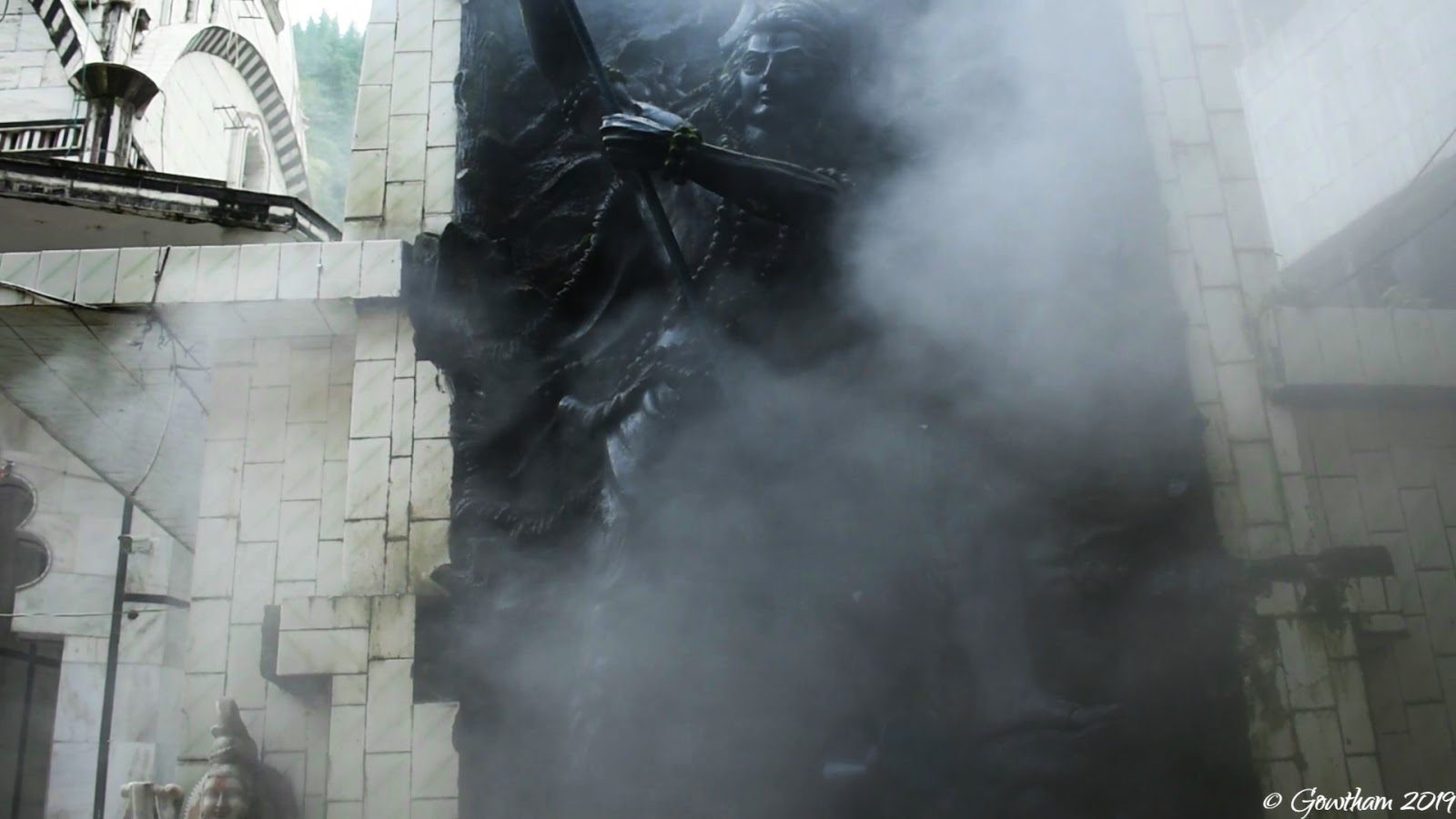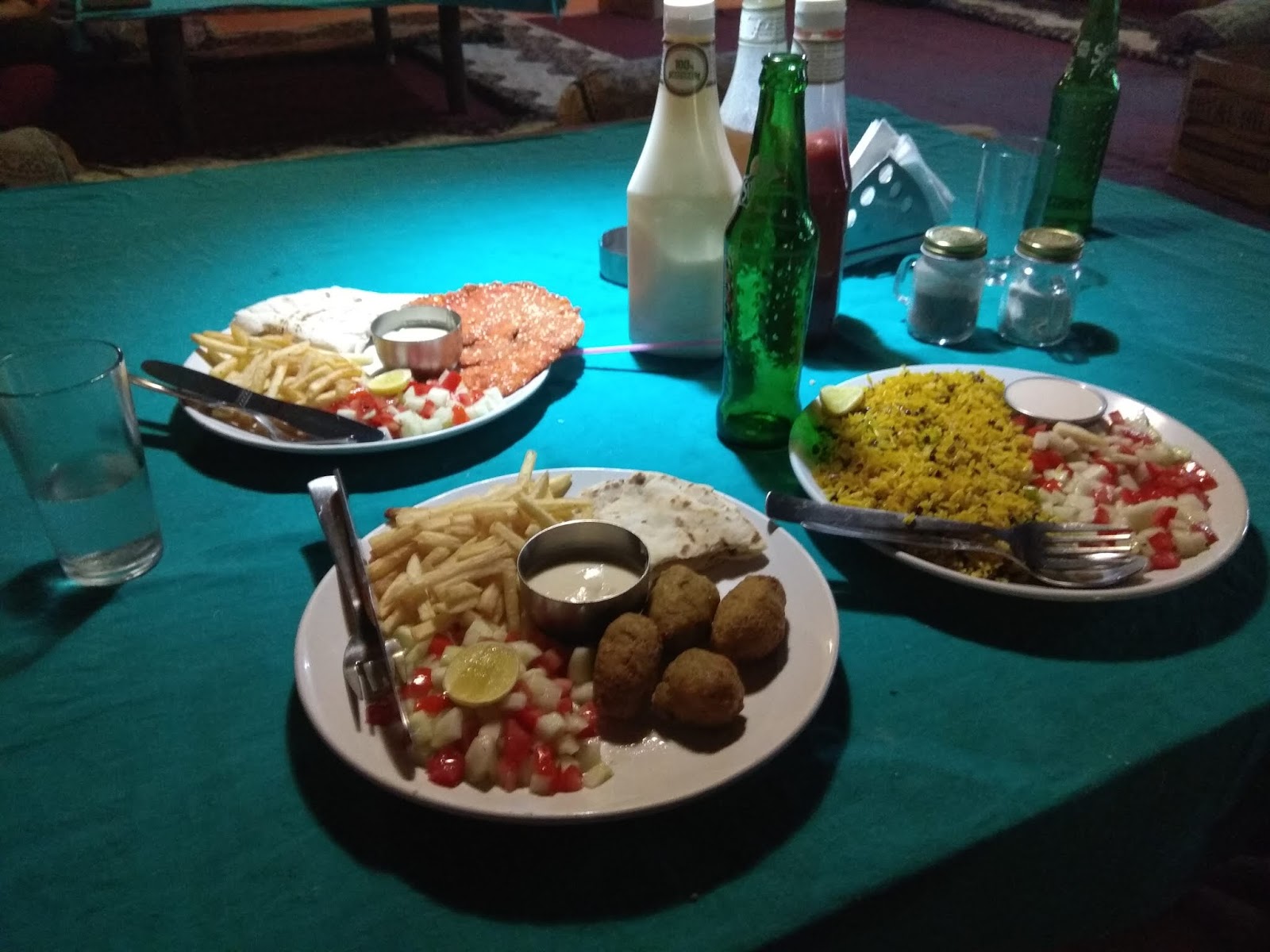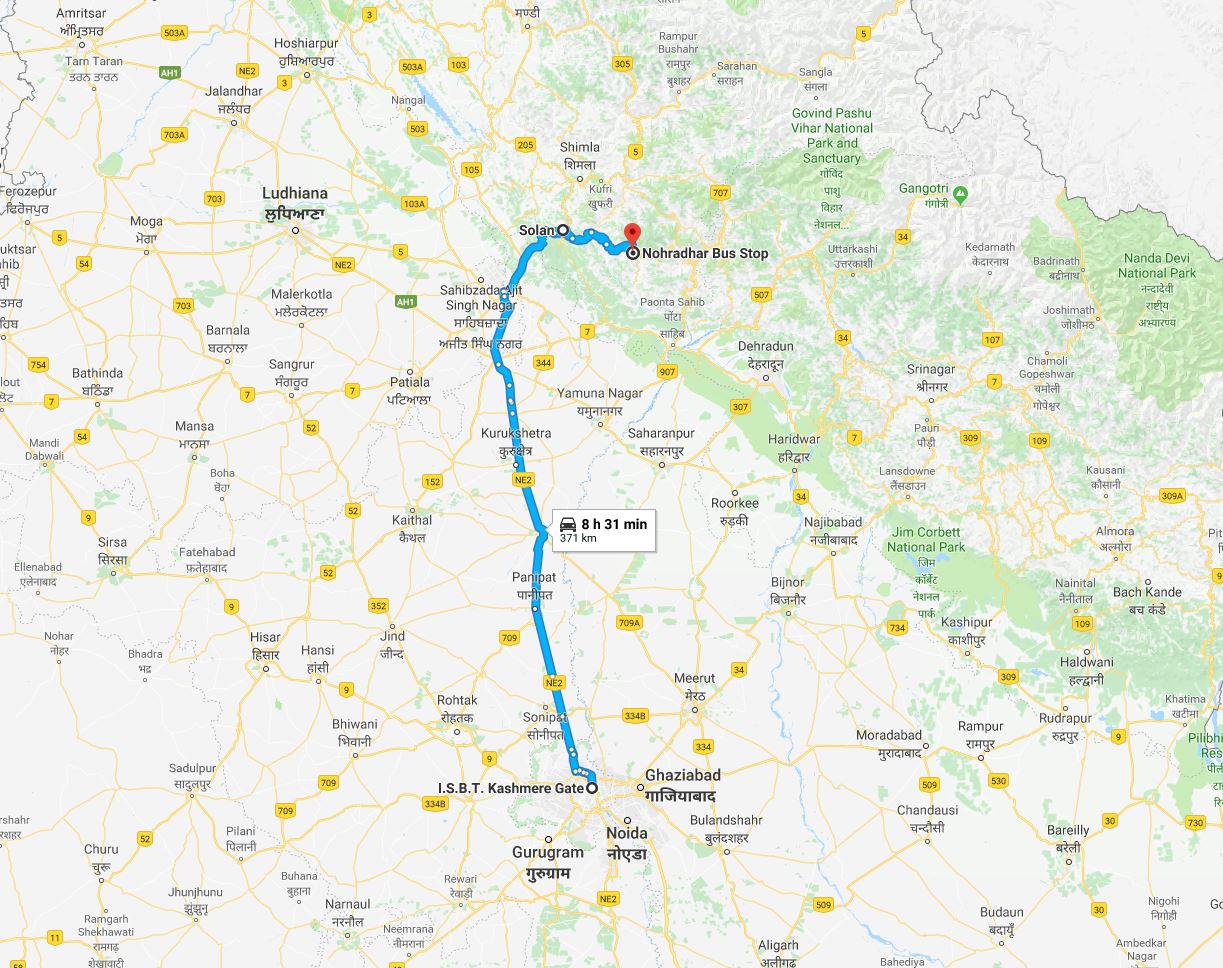Malana - The Mysterious Village
Malana - The Mysterious Village,
Parvati Valley, Kullu District,
Himachal Pradesh.
August 2019.
Rahul & Me have been thinking of a
weekend trip for the past one month. Having considered locations like Kareri Lake,
Bir & Billing, Prashar Lake & Parvati valley, as the weekend approached,
we haven’t planned anything as there was news of heavy rains, flood,
landslides, death & road closures in the Himalayas. On Friday, half an hour before office
close time, at 5:30pm he asked if we would plan on going anywhere? else, it
would be a waste of three holidays. We are unprepared & booked only the “To”
tickets to Bhuntar. We chose Malana in Parvati Valley as our priority. I have
heard & read about it in the past & its Tales are shrouded in Mystery.
Day 01 ⇒ Delhi via Bhuntar to Manikaran:
After office i rushed to room & packed
basic gear for the trip in an hour. Reached Kashmere Gate & by 10:10pm,
were in the bus (an ordinary). It was empty & the road, not so crowded. Looked
unlike Delhi. By the morning as we woke up, we travelled past Bilaspur and reached
Bhuntar via Aut.
The bus we took to Manikaran was overloaded.
Because of damage to the road along the way, buses halt at the one side
& as the passengers reach the few meters on foot to the other side, another picks. We reached Manikaran around noon.
I have come to this place before, when on my first Solo Trip to the Himalayas 3 years ago. The hot springs of Manikaran, overnight stay at Kalga, enroute a tiring trek to KheerGanga, experiencing ice, bathing in the Hot spring of KheerGanga surrounded by snowcapped mountains & the stories that surround the place are still fresh in my head. The fear, curiosity & thrill of that Solo Trip had been a liberating experience. It’s a great feeling being here again.
Crossing the river, we entered Manikaran. The flow of the river was turbulent, those hot Sulphur water streams pouring down from the sides into the river were not visible & the roar of the River Parvati superseded everything as we walked towards the Gurudwara & Temple area.
We went to the bathing pool in the Gurudwara. The initial mugs of water felt very hot. It was a relaxing bath after a very exhausting journey. Had langar, then visited Pracheen Shiv Mandir.
Crossing the river, we entered Manikaran. The flow of the river was turbulent, those hot Sulphur water streams pouring down from the sides into the river were not visible & the roar of the River Parvati superseded everything as we walked towards the Gurudwara & Temple area.
We went to the bathing pool in the Gurudwara. The initial mugs of water felt very hot. It was a relaxing bath after a very exhausting journey. Had langar, then visited Pracheen Shiv Mandir.
 |
| Vapour engulfing Mahadev's Statue |
 |
| Food cooked in the hot springs |
We scouted for hotels & found one near the bridge.
After a brief rest we went out for a small stroll in the local market for
shopping & dinner. And then a long walk to let our heavy
meal digest & reached a place near the river which was overlooking the
bridge, sat there watching & listening to the stream & chit
chatting.
There were no one in the streets except a few taxi drivers. This was as great peace retreat because of off-season.
There were no one in the streets except a few taxi drivers. This was as great peace retreat because of off-season.
Day 02 ⇒ Jari to Malana to Kasol:
We hopped on the bus to Jari which was overloaded & had
to stand all the journey. There was a local festival at Jari & most people were
in traditional attire. Waited at the taxi-stand for almost an hour
& no one came. Not interested in wasting more time we booked the
cab & left for Malana.
Few minutes into the journey we crossed the Malana Power
Plant. The road looked treacherous. It passed by deep gorges, mountains
that had loose rocks hanging by & tall trees on the sides.
As we crossed Malana Dam, our driver pointed to the rocks & white sand that were way above the road on the sides & told that those were washed off during the floods that occurred last week.
As we crossed Malana Dam, our driver pointed to the rocks & white sand that were way above the road on the sides & told that those were washed off during the floods that occurred last week.
As we reached the entry point of the trek around noon. Police were removing Cannabis(Ganja) with metal sticks. After lunch at a shop, I left my extra luggage with its owner.
For many centuries, even the people of adjoining areas knew nothing about this village. It was explored only when a hunter reached here. The adjoining villages were keen to know about this place, however, could not understand their dialect. Therefore, they named it 'Malana', which means to join, i.e. the village that has joined the others.
 |
| Malana from a Vantage point |
"Malana,
which is the only village in this glen, is extremely, inaccessible, particularly
during the winter months when heavy snow covers the 12,000-foot
Chandrakanni Pass on the range separating Malana fromthe Beas
Valley. Also, the 10,000-foot Rashol Pass opposite the village giving
access to the Parbatti valley.
During these months, the only route to Malana lies along the bank of the torrent Itself a perilous goat-track winding through the narrow gorge and below immense precipices. Falls of rock and huge boulders from the cliffs above are not infrequent and tend to discourage visitors to the village.
During these months, the only route to Malana lies along the bank of the torrent Itself a perilous goat-track winding through the narrow gorge and below immense precipices. Falls of rock and huge boulders from the cliffs above are not infrequent and tend to discourage visitors to the village.
In summer, the easiest route lies over the Chandrakanni
Pass, though this involves a lengthy climb from Naggar in the Beas valley and
an arduous descent of 4,000 feet from the Pass down the precipitous slope to
the village. Loaded pack ponies cannot reach Malana by any of the paths, which
are passable only to travelers on foot."
 |
| Entry point of the trek |
Today, the distance has shortened. Malana is about 21 km from Jari. A Taxi takes you the first 17 kms, and then you trek uphill.
The
inhabitants of Malana are completely unaware of their historical background,
i.e. from where they have come, since when they have been living there, and why
they have settled in such an inaccessible area. Some villagers claim to have
descended from Alexander’s soldiers, although genetic typing hasn’t
substantiated this, others say they belong to the clan of Jamadagni Rishi or
Jamlu (their all-powerful god.)
We stared trekking, crossed a small bridge after the initial decent. The trail passed through the mountain side, it was approximately 3.5 km to the village & an easy one. All along the way you will find a lot of Hashish plants.
10 minutes before entering the village, we were greeted by a guy at a small stall. He said, “come have a sample of coffee & tea”, “this is off season”, “You won’t find this, in the village & its costly, etc..,” we then understood what he was talking about. He showed us the Famous Maal of Malana the “Red Ice & Malana Cream”.
 |
| Cannabis (Ganja) |
Another stream crossing & we reached Malana. We were greeted by people in the shops at the entrance of the village asking if we want cannabis. Not their mistake, most people come here for Nasha. It’s obvious that people will take you for a “Nashedi”. But things were not the same in the past.
When Rosser’s visited, Malanis bartered ghee, wool, honey and game birds with the other Kullu villages for salt, food and tools. Today, nobody barters because a thriving illegal cannabis trade has made the villagers cash rich. Nowhere in his research work did he mention about Hashish (Ganja). As, its production is common in almost all parts of India in those days. Which indicates it has recently flourished in the Valley.
When Rosser’s visited, Malanis bartered ghee, wool, honey and game birds with the other Kullu villages for salt, food and tools. Today, nobody barters because a thriving illegal cannabis trade has made the villagers cash rich. Nowhere in his research work did he mention about Hashish (Ganja). As, its production is common in almost all parts of India in those days. Which indicates it has recently flourished in the Valley.
 |
| Scalp of a goat suspended on the temple wall |
There might be factors that have led to this, some of which are its severe physical & social isolation. The result of this isolation has been that Malana was more or less ignored by the Government and is rarely visited by Government officials from Kulu. It enjoys a sort of de facto independence. In the past, even the Rajas of Kullu thought of it as a place for thieves & crooks.
 |
| A decorated wall |
Illegalizing Marijuana in India might be another reason. India
had been battling American pressure since 1961 to keep marijuana legal. Given
that ganja, charas and bhang were a way of life in India, officials opposed the
drastic measure. In 1985, the Rajiv Gandhi government buckled under pressure and enacted a law called the Narcotic Drugs & Psychotropic
Substances (NDPS) Act.
One of the most prominent reasons for not uplifting the ban
allegedly is the amount of revenue earned by the govt. via letting the liquor
and tobacco companies run their business in our country.
We scouted into the village. On the way to
the first temple there were children playing & some smoking &
there were others who flash the weed & ask if we need some.
The
people consider their temples & language too sacred for any outsiders. There will be boards on display saying Don’t touch, you will be
fined. The locals tell you not to touch anything, the people, their houses,
belongings, etc.., you are allowed to walk on the concrete road that
passes through the village.
The Malanis have their own language, Kanashi, this differs from the dialect of Pahari spoken generally in Kulu. Kanashi has its own grammar, syntax and vocabulary and is not understood by any Kulu villager other than the Malanis. The Malanis also speak Kuluhi— the Kulu dialect—and use this in their dealings with other villages in Kullu.
The Malanis have their own language, Kanashi, this differs from the dialect of Pahari spoken generally in Kulu. Kanashi has its own grammar, syntax and vocabulary and is not understood by any Kulu villager other than the Malanis. The Malanis also speak Kuluhi— the Kulu dialect—and use this in their dealings with other villages in Kullu.
The village is territorially divided into two compact areas of
habitation about fifty yards apart, known respectively as Dhara Behr and Sara
Behr. Between the two Behr’s is a neutral area known as the Harchar
(meeting-place). Here are located a large stone platform and a grass quadrangle. At the center is a stone which is believed to be a replica of Jamlu. Here is where the village's judicial council sits.
They
also have a unique form of governing & Judicial system due to which they
also claim to be the oldest democracy. If a person does not agree with the
judgment of the court, he can appeal to Jamlu and have the case decided by
the god. This is done by an ordeal in which two young goats are used. The
Pujari sprinkles water from a special pot belonging to the god over the back of
each goat. Then all wait to see which goat will shiver first. The goat
shivering first is held to belong to the loser in the dispute. This decision is
now final. (some say the foreleg of the lambs is cut an inch deep & stuffed
with poison & stitched back. The one whose lamb dies first, looses the
case.)
 |
| On the left is the Main Temple, in the grassy patch the Sacred Stone |
We too had experienced that Superiority complex of the
Malanis or as some people call it Untouchability. They strictly avoid physical
contact. Here are few instances. As we were about to enter a shop the shopkeeper stopped
us & told us we should not enter the shop. A similar thing happened when we
bought some eatables from a village Hawker. We put the money on the ground
& he placed the items on the ground & we pick our respective things then.
 |
| View of Malana dam from outskirts of the village |
After finishing the trek, took a cab to Kasol. The guys
we met in cab helped us get a cheap accommodation. We put our luggage &
left to explore. We tried different pies in the bakeries there. We found a board pointing Chalal & Rasol & we decided
to go to Chalal, as Rasol is 14km & we can’t make it back. We started for
Chalal following the markings on the sides. It drizzled a little as we went alongside
the river then disappeared into the tree line.
Out of the blue, we reached a place where there was a
villa & a few tents. We met the owner, he was welcoming. There were some
foreigners smoking & enjoying the music. The old man offered us tea &
we sat there chit-chatting for another hour or so. We discussed on a wide range
of topics.
It got dark & started to rain a little, we bade our good byes
& left. Reached Kasol, explored the local market
& had Israeli food for dinner at Mama’s café.
Day 03 ⇒ Kasol to Delhi:
 |
| Israeli food |
Day 03 ⇒ Kasol to Delhi:
In the morning we trekked to Chalal again. The route passed
mostly through the riverside & sometimes disappearing into the dense tree
cover. It took us an hour to reach.
We even ventured far from Chalal
exploring the Village & Apple orchards. After returning to Kasol we had our
Lunch & left for Bhuntar, then to Delhi.
References used for the post:
Here is the link to the seminal paper published by Collin Rosser:
 |
| Map of Parvati Valley |
" IT IS BETTER TO SEE SOMETHING ONCE THAN TO HEAR ABOUT IT A THOUSAND TIMES."
References used for the post:
Here is the link to the seminal paper published by Collin Rosser:
https://www.epw.in/journal/1952/19-20/special-articles/hermit-village-kulu.html
Physical layout of the village taken from:
https://shodhganga.inflibnet.ac.in/bitstream/10603/120789/8/08_chapter%201.pdf
Others:
https://www.lawyered.in/legal-disrupt/articles/marijuana-illegal-india/
https://www.thehindu.com/society/malana-the-valley-of-cannabis/article24114604.ece
Physical layout of the village taken from:
https://shodhganga.inflibnet.ac.in/bitstream/10603/120789/8/08_chapter%201.pdf
Others:
https://www.lawyered.in/legal-disrupt/articles/marijuana-illegal-india/
https://www.thehindu.com/society/malana-the-valley-of-cannabis/article24114604.ece



















Lovely blog 👍👍👍
ReplyDeleteThank you.
DeleteSuperb brother .
ReplyDeleteSeems very nice place I would love to go there.
Ya, great place.;)
Deletesuper bro... nice place and presentation
ReplyDeleteThank you very much..
DeleteSuper gowtham hatsoff for ur patience to recollect & write everything ee may not visit places but ur narration takes us there thank you
ReplyDeleteThank you bro..
DeleteThe closing line is just awesome!!!
ReplyDelete